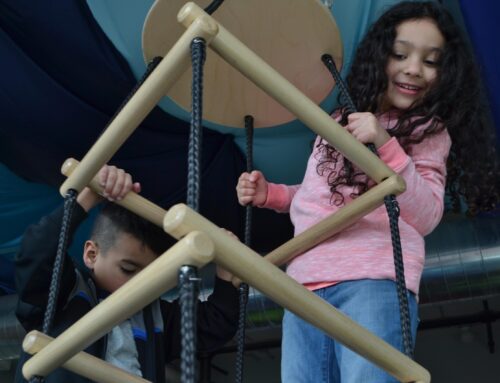Yoga has several well-known benefits, including relaxation, strengthening, balance, and motor coordination. There are also many researched benefits of yoga as an intervention to address typical gross motor challenges for children with Autism Spectrum Disorder (ASD), which typically include limited postural stability, limited motor control, balance deficits, gait abnormalities, and decreased bilateral coordination.
Below, we have outlined several physical therapy goals that can be addressed through yoga:
Strengthening
Yoga is a great tool for global strengthening, as it requires you to maintain anti-gravity positions for a prolonged duration. By holding static poses, you are targeting isometric strength, which is required for functional activities requiring static control. Decreased core strength is commonly seen in children with ASD, which affects their ability to sit upright throughout the school day. By engaging in a regular yoga routine, children will target the postural stability muscles required to maintain upright sitting, which will assist them in engaging in academic learning activities.
Recommended pose: Plank or down dog
Plank or down dog requires your child to maintain an anti-gravity weight bearing position, which promotes global upper extremity and core strengthening and stability.
Balance
Yoga incorporates several poses requiring your child to maintain a static pose for sustained duration while maintaining a narrow base of support. Yoga also addresses dynamic balance, as it requires you to flow and transition between various poses, while maintaining stability through your upper and lower extremities. By practicing poses requiring static and dynamic balance, your child will be able to transfer these skills to functional activities of daily living, including dressing, stairs, gait, and stepping over obstacles.
Recommended pose: Tree pose
Tree pose involves standing on one foot while maintaining hands together at midline or stretched over head.

Motor Control
Yoga incorporates a variety of poses, flowing in sequence from one to the next. Yoga also incorporates several multi-step poses, which will allow your child to develop body awareness and motor control while flowing throughout their sequence. Children with ASD typically present with rigid or “clumsy” movements and require increased time for motor planning. By practicing multi-step motor sequences, your child will be able to develop motor control, bilateral coordination, and fluid transitions.
Recommended pose: Vinyasa
Flowing between a sequence of postures, flowing from one to the next.
Example: Mountain > forward fold > plank > upward dog > downward dog
Relaxation and Body Awareness
Limited body awareness is a common challenge for children with ASD, which directly affects their ability to engage appropriately in gross motor activities. Yoga can be used as a tool to bring awareness to your body through relaxation and diaphragmatic breathing.
Recommended pose: Shavasana/Corpse Pose
Lay on your back with your hands on your stomach. Bring awareness to your breath while feeling your belly rise and fall with each inhalation and exhalation.
Try it at Home!
There are several ways you can incorporate a yoga routine at home with your child. Yoga is a great way for you and your child to promote a healthy lifestyle while working towards your child’s physical therapy goals. A few options are listed below:
- Yoga Pretzels (Yoga cards)
- Super Stretch App
- Youtube/On Demand
Resources:
Radhakrishna, S., Nagarathna, R., & Nagendra, H. R. (2010). Integrated approach to yoga therapy and autism spectrum disorders. Journal of Ayurveda and integrative medicine, 1(2), 120-4.
Memari, A. H., Ghanouni, P., Shayestehfar, M., & Ghaheri, B. (2014). Postural control impairments in individuals with autism spectrum disorder: a critical review of current literature. Asian journal of sports medicine, 5(3), e22963.
Ament, K., Mejia, A., Buhlman, R., Erklin, S., Caffo, B., Mostofsky, S., & Wodka, E. (2015). Evidence for specificity of motor impairments in catching and balance in children with autism. Journal of autism and developmental disorders, 45(3), 742-51.

Blue Bird Day fosters socialization, sensory regulation, and pre-academic learning in children ages 2-7 years in therapeutic rotations that simulate preschool and kindergarten settings. Our compassionate therapists practice a relationship-based and family-centered approach, provide parent training, and collaborate on goals and individualized intensive treatment plans for your child.
We believe in a collaborative and multi-disciplinary team approach to therapy. A team of occupational therapists, speech-language pathologists, dietitians, developmental therapists, behavioral therapists, physical therapists, and therapeutic assistants are created for each child to ensure child and family are fully supported and the best possible results are achieved.
Options for individualized, group and virtual therapy sessions are available as well.
Want to learn more or you have a specific question? Feel free to connect with us here!



